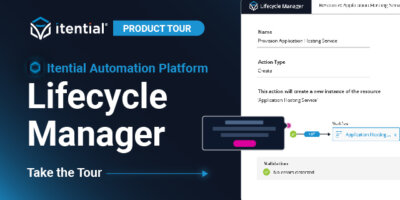Simplify How You Deploy, Track, & Manage Network Services with Itential’s Stateful Orchestration Capabilities
Service providers and large enterprises who view network infrastructure as a resource to be offered as differentiated services to customers will face challenges in managing those services over the lifetime that they operate. When a service is initially deployed, it will require multiple network resources to be allocated and configured along with customer, service, and ticket identifiers associated with the service instance. As the service moves from one lifecycle stage to another, this data can change making it challenging to track and update, and when a service is cancelled some resources may not be deallocated if updated tracking hasn’t been maintained.
To efficiently manage a multitude of complex network services at scale, organizations need stateful orchestration, which is the ability to automate any network changes, orchestrate end-to-end service processes, and flexibly update and track a multitude of different data types related to each service.
Whether it’s tracking details of a set of network devices, like VLANs, IP Addresses or ACLs, or managing intricate network services that span routers, firewalls, cloud, and IT systems, Itential’s Lifecycle Manager (LCM) can help. With LCM, teams will be able leverage stateful orchestration to keep tabs on infrastructure resources, critical details, and current statuses for all services by using workflows to automate common management processes and keep resource information up to date.
Watch the webinar discussion and demo where Peter Sprygada and Rich Martin show you how to:
- Understand LCM’s Stateful Orchestration features and identify relevant use cases.
- Create a Resource Model for tracking data for a service.
- Associate a workflow to an Action that will operate on a service instance.
- Manage a service’s lifecycle process using Create, Update, and Delete Actions.
- Review a network service’s details and history throughout its lifetime.
